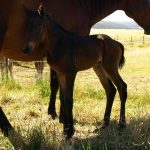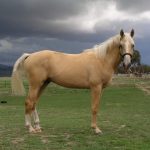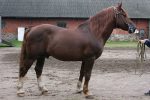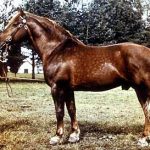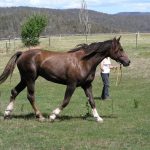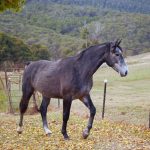Tori Horse
The Tori, also known as Tori Hobune and Toriiskaya, is an all-purpose breed of horses originating at the Tori stud in Estonia in the late 19th century. It is primarily a harness type horse with unified conformation and a very solid build.
Tori Horse Pictures
- Tori Foal
- Tori Horse Images
- Tori Horse Pictures
- Tori Horse Stallion
- Tori Horse
- Tori Horses
Quick Information
| Other Names | Tory, Toric |
| Temperament / Personality | Calm and quiet, good-natured, cooperative, easy to handle, very friendly |
| Physical Characteristics | Well-muscled structure, large/medium-sized head, fleshy and medium-length neck, moderate-sized withers, long and flat back, broad loin and croup; deep, broad chest, properly set limbs |
| Colors | Chestnut, liver chestnut, palomino, bay, black |
| Height (size) | At withers: 15.95 hands (162 cm) Oblique body length: 16.7 hands (170 cm) Cannon bone circumference: 22.3 cm Chest girth: 200 cm |
| Weight | About 1,411 lb (640 kg) |
| Blood Type | Warm-blooded |
| Common Uses | Draft, riding, sport, and show horse |
| Health | Long-lived and healthy breed; not known to suffer from common equine diseases |
| Gaited | Yes; dynamic trot and a powerful, long stride |
| Popular Traits | Endurance, strength, high fertility ratio, ability to withstand harsh weather conditions, good food utilization |
| Feeding/Diet | 15-20 lbs of hay, small amounts of grain twice a day |
| Country of Origin | Parnumaa County, Estonia |
| Ancestors | Native Estonian mare, European halfbred stallions |
| Breed Registry/Association | Old Tori Horse Society, Estonian Horse Breeders Society |
Estonian Tori Horse Video
History and Development
The development of this horse breed at the Tori stud commenced in 1856 when a Norfolk-Roadster halfbred stallion named Hetman was crossed with native Estonian mares. The equine breed proliferated due to the extensive use of Hetman as well as its offspring. However, at the end of the 1930s, a deterioration of robustness and performance was exhibited as a result of widespread inbreeding. In order to eliminate inbreeding depression, Breton stallions were imported in 1937. This resulted in massive type horses, though the quality of gaits declined.
Soon after, there was a growing need of horses with both sporting and utility qualities. To meet the need, a crossing of Tori horses with Trakehner, Holstein, and Hanoverian stallions was undertaken on an experimental basis. Today, the breeders have created a lighter sport horse-type Tori, which has resulted in the rapid decline of the purebred. In 2012, a separate studbook was formed for the Old-Tori horses to preserve the breed. In 2014, only a hundred purebred Estonian Tori horses were found in Estonia.


